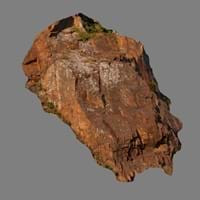Talc carbonate and Granulite
Definition
Definition
Talc carbonate is nothing but a rock sequence or a mineral composition found in metamorphic ultramafic rocks.
Granulite is fine to medium grained metamorphic rock with a granular of polygonal crystals.
History
Origin
China, USA, Middle east
Central Europe
Discoverer
Unknown
Unknown
Etymology
From medieval Latin, talcum
From Latin granulum, a little grain or fine grained
Class
Metamorphic Rocks
Metamorphic Rocks
Sub-Class
Durable Rock, Soft Rock
Durable Rock, Hard Rock
Family
Group
Not Applicable
Not Applicable
Other Categories
Fine Grained Rock, Opaque Rock
Coarse Grained Rock, Medium Grained Rock, Opaque Rock
Texture
Texture
Very Soft
Granoblastic
Color
Colourless, Grey, White
Black, Brown
Maintenance
Less
Less
Durability
Durable
Durable
Water Resistant
Yes
Yes
Scratch Resistant
Yes
Yes
Stain Resistant
No
Yes
Wind Resistant
No
No
Acid Resistant
No
No
Appearance
Soft
Veined or Pebbled
Uses
Architecture
Interior Uses
Decorative Aggregates, Interior Decoration
Bathrooms, Countertops, Decorative Aggregates, Entryways, Flooring, Homes, Hotels, Interior Decoration, Kitchens, Stair Treads
Exterior Uses
Garden Decoration
As Building Stone, As Facing Stone, Garden Decoration, Office Buildings, Paving Stone
Other Architectural Uses
Powder
Curbing
Industry
Construction Industry
Source of calcium
As Dimension Stone, Building houses or walls
Medical Industry
Taken as a Supplement for Calcium or Magnesium
Not Yet Used
Antiquity Uses
Artifacts, Jewellery, Monuments, Sculpture, Small Figurines
Artifacts, Monuments, Sculpture
Other Uses
Commercial Uses
Manufacturing of baby powder
Curling, Gemstone, Laboratory bench tops, Soil Conditioner, Tombstones
Types
Types
Not Available
Not Available
Features
Easily splits into thin plates, Generally rough to touch, Host Rock for Lead
Clasts are smooth to touch
Archaeological Significance
Monuments
Used
Used
Famous Monuments
Data Not Available
Data Not Available
Sculpture
Used
Used
Famous Sculptures
Data Not Available
Data Not Available
Pictographs
Used
Not Used
Petroglyphs
Not Used
Not Used
Figurines
Used
Used
Fossils
Absent
Absent
Formation
Formation
Due to change in environmental conditions, rocks are heated and pressurized deep inside the Earth's surface. Talc Carbonate is formed from the extreme heat caused by magma or by the intense collisions and friction of tectonic plates.
Granulite is a fine-grained granular metamorphic rock in which the main component minerals are feldspars and quartz and forms at high temperature and pressure conditions.
Composition
Mineral Content
Carbonate, Chlorite, Magnesium
Amphibole, Biotite, Feldspar, Hornblade, Micas, Muscovite or Illite, Plagioclase, Quartz
Compound Content
CaO, Carbon Dioxide, MgO
Aluminium Oxide, CaO, Carbon Dioxide, Iron(III) Oxide, FeO, Potassium Oxide, MgO, MnO, Sodium Oxide, Phosphorus Pentoxide, Sulfur Dioxide, Titanium Dioxide
Transformation
Metamorphism
Yes
No
Types of Metamorphism
Burial Metamorphism, Cataclastic Metamorphism, Contact Metamorphism, Hydrothermal Metamorphism, Impact Metamorphism
Not Applicable
Weathering
No
Yes
Types of Weathering
Not Applicable
Biological Weathering, Chemical Weathering
Erosion
No
Yes
Types of Erosion
Not Applicable
Chemical Erosion, Water Erosion, Wind Erosion
Properties
Physical Properties
Hardness
1-2
6-7
Grain Size
Fine Grained
Medium to Coarse Grained
Fracture
Flat
Not Available
Streak
White
White
Porosity
Less Porous
Very Less Porous
Luster
Pearly
Vitreous
Compressive Strength
250.00 N/mm2
4
175.00 N/mm2
13
Cleavage
Perfect
Imperfect
Toughness
1
Not Available
Specific Gravity
2.86
2.8-3.0
Transparency
Translucent
Opaque
Density
2.8-2.9 g/cm3
3.06-3.33 g/cm3
Thermal Properties
Specific Heat Capacity
0.92 kJ/Kg K
10
0.14 kJ/Kg K
26
Resistance
Heat Resistant, Wear Resistant
Heat Resistant, Wear Resistant
Reserves
Deposits in Eastern Continents
Asia
Not Yet Found
China, India, Iran, Saudi Arabia, Sri Lanka, Taiwan, Thailand, Turkey, Vietnam
Africa
Ethiopia, Ghana, Western Africa
Angola, Egypt, Madagascar, Nigeria, South Africa
Europe
England
Austria, Belgium, Finland, France, Germany, Italy, Norway, Sardinia, Spain, Switzerland, The Czech Republic, Venezuela
Others
Not Yet Found
Not Yet Found
Deposits in Western Continents
North America
Canada, USA
Canada, USA
South America
Argentina, Bolivia, Uruguay
Not Yet Found
Deposits in Oceania Continent
Australia
Central Australia, South Australia, Western Australia
Not Yet Found
All about Talc carbonate and Granulite Properties
Know all about Talc carbonate and Granulite properties here. All properties of rocks are important as they define the type of rock and its application. Talc carbonate and Granulite belong to Metamorphic Rocks.Texture of Talc carbonate is Very Soft whereas that of Granulite is Granoblastic. Talc carbonate appears Soft and Granulite appears Veined or Pebbled. The luster of Talc carbonate is pearly while that of Granulite is vitreous. Talc carbonate is available in colourless, grey, white colors whereas Granulite is available in black, brown colors. The commercial uses of Talc carbonate are manufacturing of baby powder and that of Granulite are curling, gemstone, laboratory bench tops, soil conditioner, tombstones.
|
||
|
||
|










